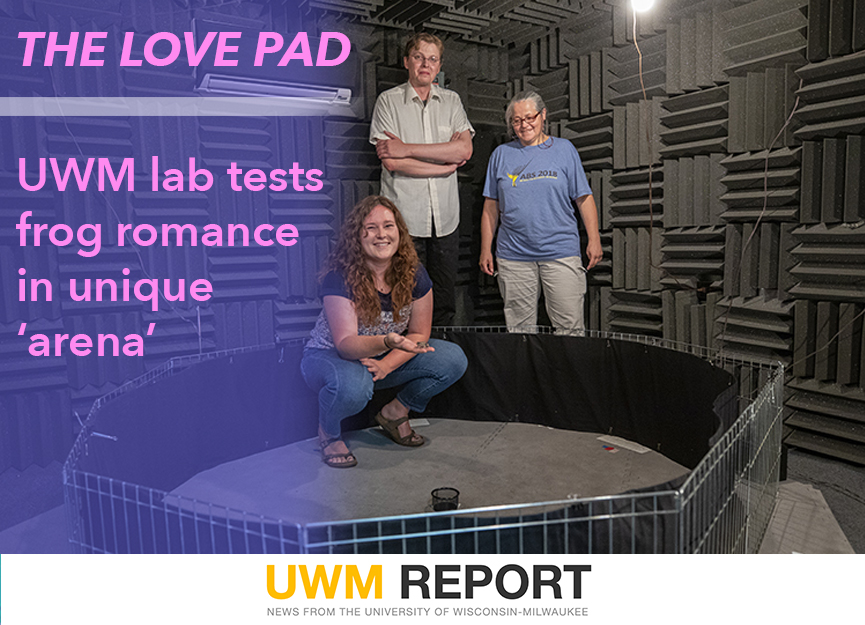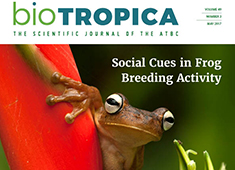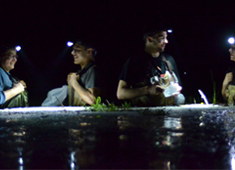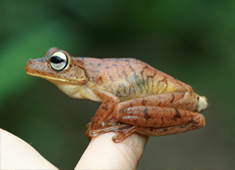Research in the Anuran Behavioral Ecology Lab
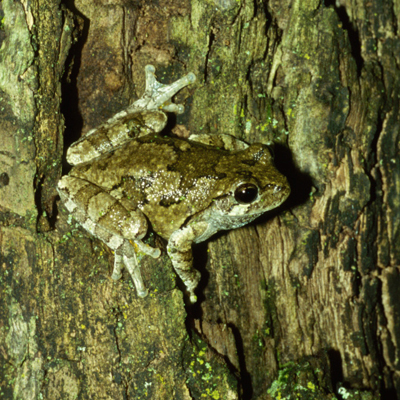
Research Interests
- Mate Choice
- Behavioral Plasticity
- Multimodal Communication
- Natural History
Research in my lab focuses on the evolution and function of anuran communication signals. Most projects involve mate choice and sexual selection, and the effect of the social environment (conspecifics, heterospecific, predators, etc) on the expression of sexual traits. Although most projects deal with sexual communication, we also study anuran reproductive ecology and its relationship to biotic and abiotic factors, the importance of acoustic cues for foraging and habitat selection, and how body color is involved in aposematism, camouflage and thermal ecology. Mostly we study treefrogs, but we have also worked with true frogs, dart-poison frogs, insects, and spiders.
Examples of Current and Developing Projects
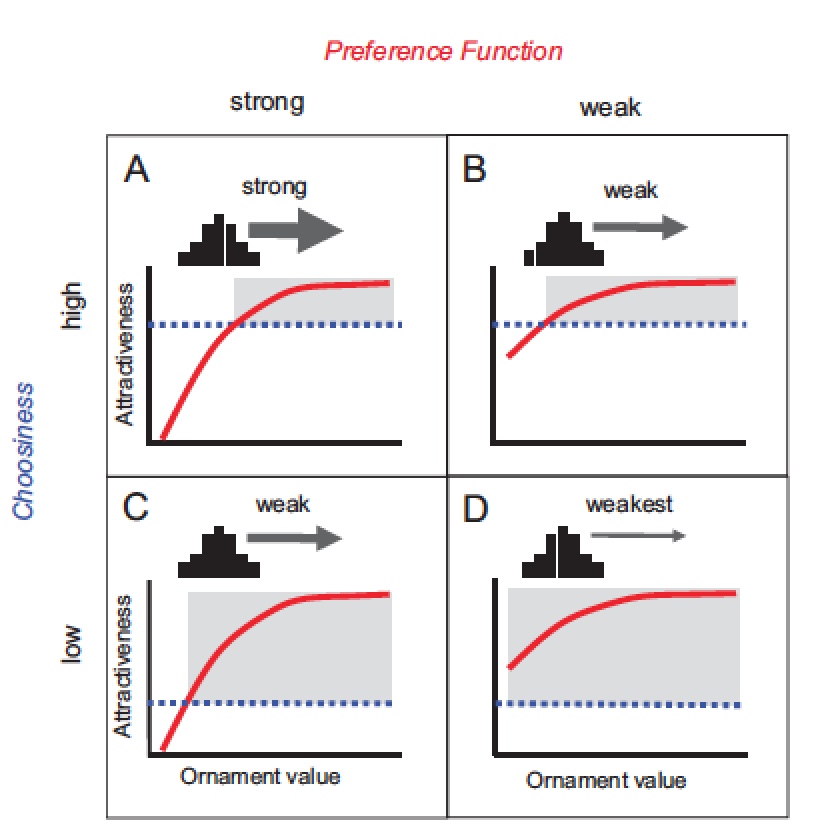
The Architecture of Mate Choice Decisions
Mate choice is an important cause of natural and sexual selection, driving the evolution of ornaments and promoting diversification and speciation. We use mate preference functions (the ranking of the attractiveness of prospective mates) and choosiness (the effort invested in mate assessment) to study causes of variation in mate choice behavior and their contribution to sexual selection.

Behavioral Plasticity
Frog choruses are highly dynamic, and the composition of chorus participants (i.e., potential mates or rivals) can change on a daily or even hourly basis. We are interested in whether males adjust their behavior according to changes in the competitive environment, and whether females modify their mate choice decisions based on experience with different chorus environments (variation in species composition, male attractiveness, etc.). The ecological settings in which mate choice takes place can be highly variable, and another line of research investigates whether female mate choice decisions are influenced by variation in light levels, biotic or abiotic noise, or features of the breeding pond.
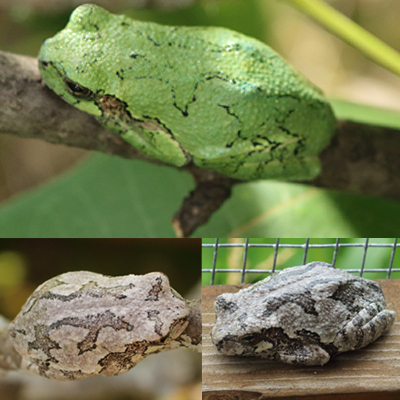
Visual Ecology and Color Change in Gray Treefrogs
Despite their common name, gray treefrogs (Hyla versicolor) show exceptional ability to change their body color and can switch from gray to bright green (Example: same frog photographed over course of 1 week). Color change is generally assumed to have evolved in the context of predator avoidance (camouflage), yet because darker frogs absorb more heat (and vice versa), it may also function in thermoregulation. We are examining the visual ecology of gray treefrogs to test whether color change functions primarily for camouflage and thermoregulation or for mate choice (i.e., whether it is primarily under natural or sexual selection).
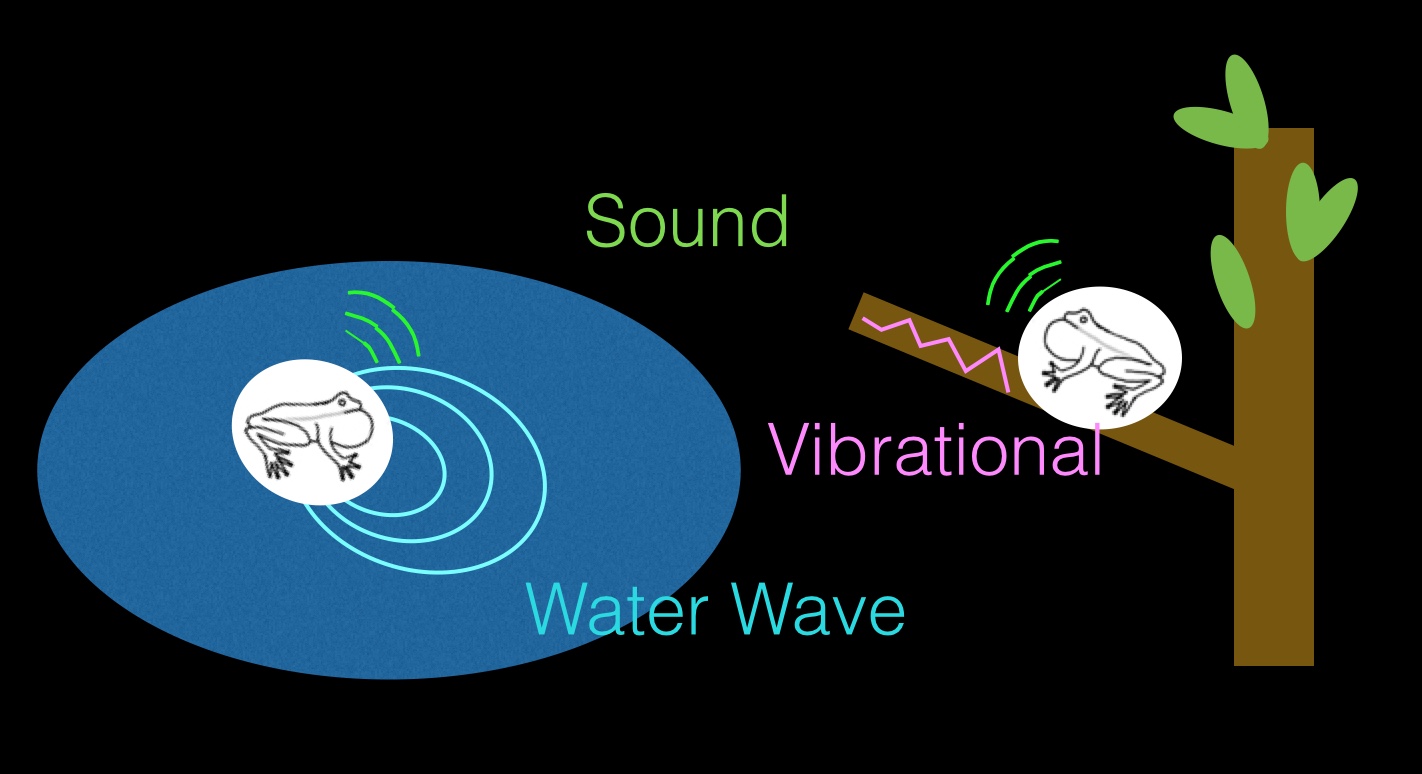
Multimodal Communication
Frogs are considered the epitome of acoustically communicating organisms. Nevertheless, calling males produce inherently multimodal signals as they inflate and deflate their vocal sacs, such that each call is associated with a default visual and vibrational/water-wave component. We are interested in elucidating the importance of individual and combined signal components (“modality interactions”) for signal perception, signal evolution and mate choice.
